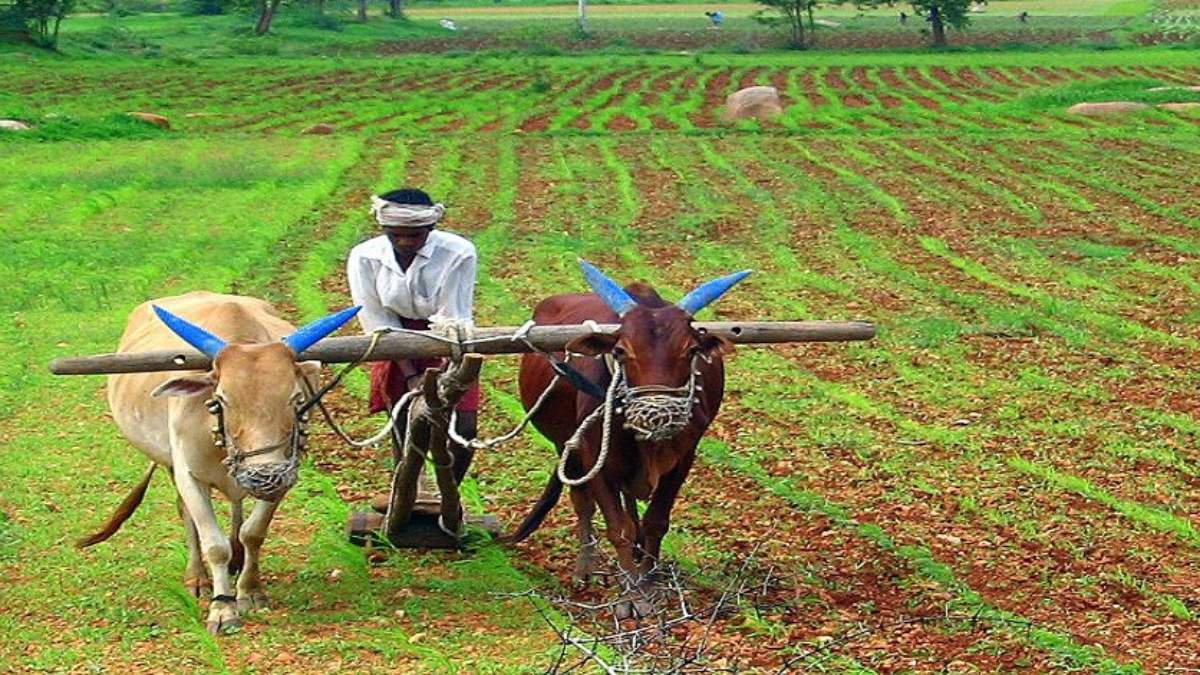The Government of India has set in motion reforms which will lead to the eventual development of a very large number of private markets near the agricultural produce growing regions. The village level agri-marketing infrastructure is the last remaining piece in this giant jigsaw puzzle which has remained unfixed in India for the last 70 years. This missing link at the bottom of the pyramid, which would be in the form of storage and transportation and other agriculture-related infrastructure at the panchayat level, has to be plugged in.
The Government of India needs to move away from schemes which dole out subsidies to individual rich farmers. It is time to make the intellectual and philosophical shift to building infrastructure on the post-production storage, logistics and marketing fronts and leave individual economic agents, including farmers, to function on the basis of the demand and supply of various commodities. A production mindset creates perverse incentives for the production of certain commodities including what is happening in the case of wheat, paddy, sugarcane and some other commodities which suffer the overhang of this mindset. Having said that, risk mitigation mechanisms like MSP procurement and PDS distribution systems would need to continue for a long time to accord protection to growers as well as consumers from a food and nutrition security perspective.
The Standing Committee on Agriculture (Chair: Hukumdev Narayan Yadav) submitted its report on ‘Agriculture Marketing and Role of Weekly Gramin Haats’ on January 3, 2019, and recommended that the Central Government (i) increase the number of haats being targeted under the scheme and ensure presence of a haat in each panchayat of the country, and (ii) make the scheme a fully funded central scheme. As against the 22,000 haats mentioned in the Committee report, other sources quote there being 47,000 haats across India with no or very rudimentary infrastructure with produce lying on the ground for sale, etc. The presence of such vast numbers of unregulated village cluster level markets establishes the need for panchayat-level infrastructure as also recommended by the Committee.
According to a National Centre for Cold-Chain Development (NCCD), GoI report, there is a very large gap in the case of pre-cooling/pack-houses (99% gap in demand – 70,080 vs supply – 249), reefer transport (85%) and ripening units (91%) at the level of villages/village clusters. Currently, the post-harvest losses in fruits and vegetables are huge, with a substantial chunk being contributed by potatoes, onions, tomatoes and mangoes which contribute to more than 60% of the overall losses. The lack of cold chain facilities in India is a major reason for losses besides a host of other factors. The percentage movement of fruits and vegetables through cold chain infrastructure in India is near zero, while in the US it is around 80-85% with countries like Thailand being of the order of 30-40%. The orientation of farmers in all states is geared towards production. Not enough attention and steps have been taken to mitigate post-harvest losses. Because of the low number of reefer transportation vehicles in India and the lack of backhaul loads, the cost of cold chain transportation is very high (about 2/3 times) than the normal transportation trucking infrastructure. We have negligible pre-cooling of fruits and vegetables at the village level since infrastructure is non-existent.
WHAT IS THE SOLUTION?
Given both the recommendations and the ground level needs, the Government of India may consider a gigantic infrastructure project to ensure that there would be adequate infrastructure for storage and basic value addition. In larger villages, there would also be a need for auctioning platforms, weighing systems, quality assaying machines, training centres and transportation vehicles in the form of reefer vans as well as normal trucks for movement of agriculture produce. The core of this infrastructure which will also provide it with a self-sustainability revenue stream would be the pre-cooling, ripening, micro cold storage, dry storage and transportation infrastructure. This would be like an advanced version of a haat and more like a full-fledged mandi at the level of every Gram Panchayat in the country with infrastructure as required by fruits/vegetables (@315 million tons) which today exceed the production of grain/pulses/oilseeds (@280 million tons) in India. This requires an integrated pan-India cold chain infrastructure starting from the villages of India without which it makes no sense to have a cold chain infrastructure in just the towns and cities with no such facilities at the growing centres where most of the value destruction and wastage happens in case of fruits and vegetables. Starting a basic cold chain from the Gram Panchayats needs an analysis of the type of cold chain infrastructure that is viable and needed in the villages. There have been incentives and a bias in favour of larger cold storages in India with the trade and industry, which needs to be corrected in favour of micro cold storages at village or village cluster levels.
WHY ARE SMALL OR MICRO COLD STORAGES NEEDED?
It is not viable to store common fruits and vegetables in large cold storages, so small or micro cold storages are required at the farm level. There is a dire need for micro cold storages (MCS) despite the fact that they have a higher capital cost per ton of storage and have a higher running cost per ton of storage. This is because their usage is very different compared to a large cold storage.
The MCS can be used to aggregate and store fruits and vegetables for a few days until a financially viable transport quantity is available. Buyers typically need a truck load every few days. Demand keeps fluctuating according to which harvest of produce from given geographies in season is huge. There is a need for storage so that there are short time windows in which they can be stored during times of crashes in prices. The MCS also allows for longer term storage of two to three months, wherein prices can increase by five to ten times in cases of items like lemons and many other commodities.
MCS can also be used as ripening centres, whenever required. MCS can also become a spoke for large cold storages to ensure value preservation at the time of harvest. Since storage in MCS is normally in 20 kg crates which allow farmers to sell the produce at a higher rate in semi retail using his own or hired transportation. The MCS can also double up as village level pack house, which is nonexistent in Indian villages today, for sorting, cleaning, grading, packing and some basic value addition for vegetables and fruits.
SUGGESTED COMPONENTS OF GRAM MANDI/HAAT
The built area of each GMH unit may be a maximum of 5000 ft² which would make it one of the most imposing structures in each panchayat. There may be another thousand square feet which may be added in the form of training centres and rooms for other community activities. Part of the facility may also serve as a banquet hall for weddings and such functions at the village level. The concept of lawn marriages with the entire integrated package of services being provided by a third-party service provider has also taken root in the villages of India.
The GMH will serve as a one-stop shop for the farmers that cater to a range of relevant services and activities. They would be designed in a way so as to be equipped to locally deliver the immediate needs of the farmers. The promotion of best cultivation practices to enhance production and productivity of major field crops, vegetables, fruits and fodder crops of the region, including the introduction of new and useful plant species, can also be accessed at the GMH.
In addition to agri business units, the project can also initiate social development units including a Primary Health Centre, Women’s Skill Development Centre, Computer Education Centre and Children’s Recreation Centre.
These GMH would serve farmers through a range of services and facilities:
• Micro cold storage and dry storage for non-perishables
• Sorting, cleaning, grading, packing, and some basic value addition for fruits, vegetables and also non-perishable goods.
• Business/processing unit like seed processing units, a honey processing unit, daal mills, spice grinding units, etc.
• Provision of farm machinery on custom hiring (pay and use) basis
• Technical and expert support for cultivation of different crops
• Strengthening product value and its market integration through pulses milling facility, apiary processing and seed procurement
• Social development units such as Skill Development Centre, Computer Training Centre and Children’s play area, Primary Health Centre, etc.
• Every module within the GMH must be available on demand to the respective Gram Panchayat except for the core modules like cold storage, the dry storage, sorting/packaging/grading stations, processing unit and the training centre which should be compulsory with every GMH.
• One acre of land near the GMH should be dedicated to a technology demonstration unit which should have the latest technologies as well as the ICAR system demonstrating their technologies directly to the village. Start-ups as well as ICAR are struggling with the challenge of taking technologies from POC or subscale to mass scale implementation in the villages. The GMH could be a mechanism to facilitate this lab to land transfer system which has broken down today.
The micro cold storages could also function as bulk milk chillers at the village level which would add value to 180 odd million tons of milk which is produced all across India and whose supply chain also suffers from a lack of BMC infrastructure at the village level.
Assuming a production of 2500 tons per panchayat, storage may need to be built around 250 tons which would require a warehousing space of around 3000 sq ft.² for dry storage. Micro cold storage unit of the capacity of 30 tons rotated 12 times a year would provide storage for almost 360 tons of fruits and vegetables.
In order to fill this gap, market storage and logistic infrastructure should be built at every Gram Panchayat level in India which is at 250,000 odd locations with slightly bigger infrastructure at the block level which number around 6,600 in India.
The GMH should also provide physical space for village level workers in extension, livestock, healthcare (ANM), CSC, digital/physical training centre to ensure footfall and ensure that the facilities become a hub for all community activities in the village and the surrounding feeder villages.
Infrastructure under the SWAN Initiative of the GoI and the Common Service Centre Initiative of the GoI could also be converged for physical location within the same facilities.
FOLLOWING MODALITIES COULD BE FOLLOWED FOR ROLLING OUT GMH
Every Gram Panchayat would need to submit a proper DPR to the GoI for grant funding to set up a GMH in the respective village. The various criteria and the guidelines of the scheme would ensure the automatic self-selection of capable Gram Panchayats and would be the first off the blocks in rolling out the infrastructure first in the villages which would be capable of monetising the assets built under the project. This process would take time just like what has been envisaged for the Agriculture Infrastructure Fund scheme of Rs 100,000 crore from the GoI. GMH implementation would follow the same trajectory and may take three years to roll out to all the Gram Panchayats of India.
Gram Panchayats may need to give a written commitment to contribute two acres of land to this project and offer labour time to the project as a contribution of the villagers. This facility should include both dry storage and micro cold storage.
Gram Panchayats would also necessarily have to house the management (including the revenues and expenses) of these entities into a pre-existing village level primary agricultural cooperative society or create a new one with broad representation from the local communities for the purpose of the administration and management of these units. Some revenue rich Gram Panchayats may also opt for setting up a Farmer Producer Company with members drawn from the Gram Panchayat village as well as the feeder villages (two to every Gram Panchayat) which are in proximity to every Gram Panchayat. The entities (PACS or other COOPs) which would be engaged in management of the GMH infrastructure should be given the status of FPOs as being set up under a large programme by the GoI.
The Gram Sabha in each village would need to pass a resolution handing over a minimum of two acres of land for the GMH project. The Gram Sabha could upload all the details required directly onto a GoI portal along with the request for construction of the GMH complex in their village. These requests should be made by them directly to the Prime Minister of India.
This entire project needs to be tendered out all over India so good infrastructure companies take up the execution of creating great on-ground infrastructure. The nature and design may be customised depending on the geography. For example, the GMH in Ladakh and the GMH in Kerala would not be the same.
FUNDING FOR GMH
Presence in 250,000 Gram Panchayats and 6600 blocks would require funds to the order of 2.5 lakh crores (Rs1 crore per Gram Panchayat) for the GMH infrastructure at the panchayat level and @ 33,000 crores at the block level (@ Rs 5 crore per block). There could be direct financial support of INR 75 lakhs from the GoI coffers to every eligible Gram Panchayat in India with labour and land being contributed by the local communities under each Gram Panchayat. The GoI would raise another Rs 25 lakhs for each Gram Panchayat from CSR/grants/individual donations from domestic and international sources, making this a USD 40 billion project with the GoI funding it to the tune of USD 30 billion. The project could be implemented over three financial years from FY 21-22, 22-23 and 23-24.
The money for the scheme can be pulled in from schemes like MPLADS, Rashtriya Krishi Vikas Yojana, National Mission on Horticulture, NFSM, Krishi Bhandaran Yojana and other such major/minor schemes under MoRD and MoFPI. MGNREGA may be used to partly fund the labour cost component of the project which will be rolled out in all Gram Panchayats of India.
The GoI could also appeal to PSUs and private companies with CSR budgets to help in building this infrastructure between 1 to 100 villages depending on the CSR budgets of each corporate. There are also large international donor organisations which could be approached to provide very substantial funds to a project of this scale. Non-resident Indians as well as persons of Indian origin can also contribute towards building this infrastructure in the villages of their ancestors. The GMH will provide a structured platform to ensure that any PIO/NRI with emotional connections to their villages would be able to donate for changing the lives of their brethren in the villages in a tangible way.
ECONOMIC OUTCOMES OF BUILDING VILLAGE LEVEL INFRASTRUCTURE
All the village level infrastructure needs to be connected institutionally with the new private markets coming up all over India which may be in the form of physical private markets or even electronic markets functioning on a regional or national basis.
The infrastructure on the ground could feed into these private markets where buyers from all over India could be attracted. Private markets could be run by the FPO or cooperative societies in partnership with organisations like NAFED, GCMMF or any such successful federation or public body with large-scale interfaces with farmers. This will revive the thousands of defunct or dormant Primary Agriculture Societies across India. It would give a fillip to the FPO movement if they have the status of being FPOs with the attendant benefits as available to FPOs through various State Government and GoI schemes and facilities.
Anything monetisable by the hands of the local communities through the mechanism of the bodies owned and controlled by them creates business models and economic opportunities for millions who would be engaged with the facilities built all over India. Many Indian companies including startups would be major beneficiaries of the GMH which would mean thousands of crores of rupees as revenue for these Indian-owned organizations.
Since the cold chain and sorting/packing/grading/cleaning would start from the villages, there would be huge savings in supply chain losses which may amount to billions of dollars on an annual basis. Since there would be a sudden boost in the number of reefer transportation assets all over India, the country would reach a tipping point in terms of their usage and also freight costs moving the country from zero to approaching the levels of Thailand at 40% percent of the output being transported in these types of vehicles. Since there would be a massive jump in the number of micro cold storages in India, their unit costs would go down from the current levels of Rs 10-15 lakhs for every 15-30 tons of storage to 1/3rd of that cost, furthering triggering their adoption by even large farmers.
The GMH can also be integrated with the ‘One District, One Product’ initiative of the Government of India with there being some level of value addition at the village level to the specialty produce from the village, which may be the processing of seed spices like cumin, coriander, fennel or other such items which are grown in Rajasthan, Gujarat and Madhya Pradesh. There could be value addition to milk in the form of paneer, ghee and other products.
The project could also change the mindsets of the GoI and state governments from the current production focus to a market-driven approach. As a natural corollary of the One District One Product programme, the GoI could guide the country towards ‘One Village One Product’. There could be village wise commodity specialisation which could become the reason of renown for the village.
This will become a huge pump priming project for the economy which is suffering the effects of Covid and the turmoil in the global environment. The solution for the varied problems of the farm sector and the peasant community lies not in subsidies but in building a robust post-harvest infrastructure. It will help facilitate the journey to the doubling of farmers’ income in India.
The writer is founder and chairman, Indian Society of Agribusiness Professionals and Indigram Labs Foundation. The views expressed are personal.























